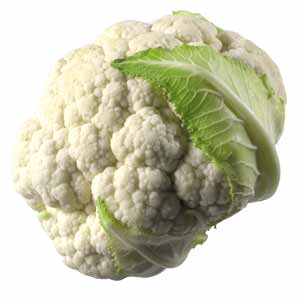1
/
of
1
Cauliflower
Cauliflower
Cauliflower
Description: Cauliflower is a white, cruciferous vegetable from the Brassica family, which also includes broccoli, cabbage, and Brussels sprouts. It has a dense head, or “curd,” composed of tightly packed florets attached to a thick central stem. While traditionally white, cauliflower also comes in other colors, such as purple, green, and orange. Its mild flavor and versatility make it a popular ingredient in various culinary applications.
Key Features:
- Nutrient-Dense: Cauliflower is low in calories yet packed with vitamins and minerals, including vitamins C and K, folate, and fiber.
- Low-Carb Alternative: Its texture and mild taste make cauliflower a great low-carb substitute for foods like rice, potatoes, and pizza crust.
- Versatile Texture: When cooked, cauliflower develops a soft texture, making it suitable for mashing, roasting, or blending into creamy dishes.
- Multiple Varieties: Cauliflower comes in several colors (white, orange, purple, and green) and each has its unique taste and nutritional profile.
Benefits:
- High in Antioxidants: Cauliflower contains antioxidants like glucosinolates and isothiocyanates, which may help protect against inflammation and certain cancers.
- Supports Heart Health: The fiber and antioxidant content in cauliflower can help improve heart health by lowering blood pressure and reducing inflammation.
- Aids in Digestion: Cauliflower’s high fiber content supports digestive health and promotes regular bowel movements.
- Weight Management: Low in calories and high in fiber, cauliflower helps promote satiety, which can aid in weight management.
- Supports Brain Health: Cauliflower contains choline, an essential nutrient that supports brain health, cognition, and memory.
Usage:
- Roasted or Grilled: Roast or grill cauliflower with spices and herbs for a flavorful side dish with a caramelized texture.
- Mashed or Pureed: Use cauliflower as a low-carb substitute for mashed potatoes or blend it into soups for a creamy, smooth texture.
- Cauliflower Rice: Finely chop or process cauliflower into rice-sized pieces for a nutritious, low-carb rice substitute.
- Curries and Stir-Fries: Add cauliflower to curries and stir-fries for a hearty vegetable that absorbs flavors well.
- Cauliflower Steaks: Slice cauliflower into thick “steaks” and grill or roast for a hearty main course alternative.
- Smoothies and Soups: Blend cooked cauliflower into smoothies or soups for added creaminess and nutrients without altering the flavor.
Cauliflower is a highly nutritious and adaptable vegetable that fits well into a variety of dishes. Its mild flavor, combined with numerous health benefits, makes it a valuable ingredient in any balanced diet.
Share

